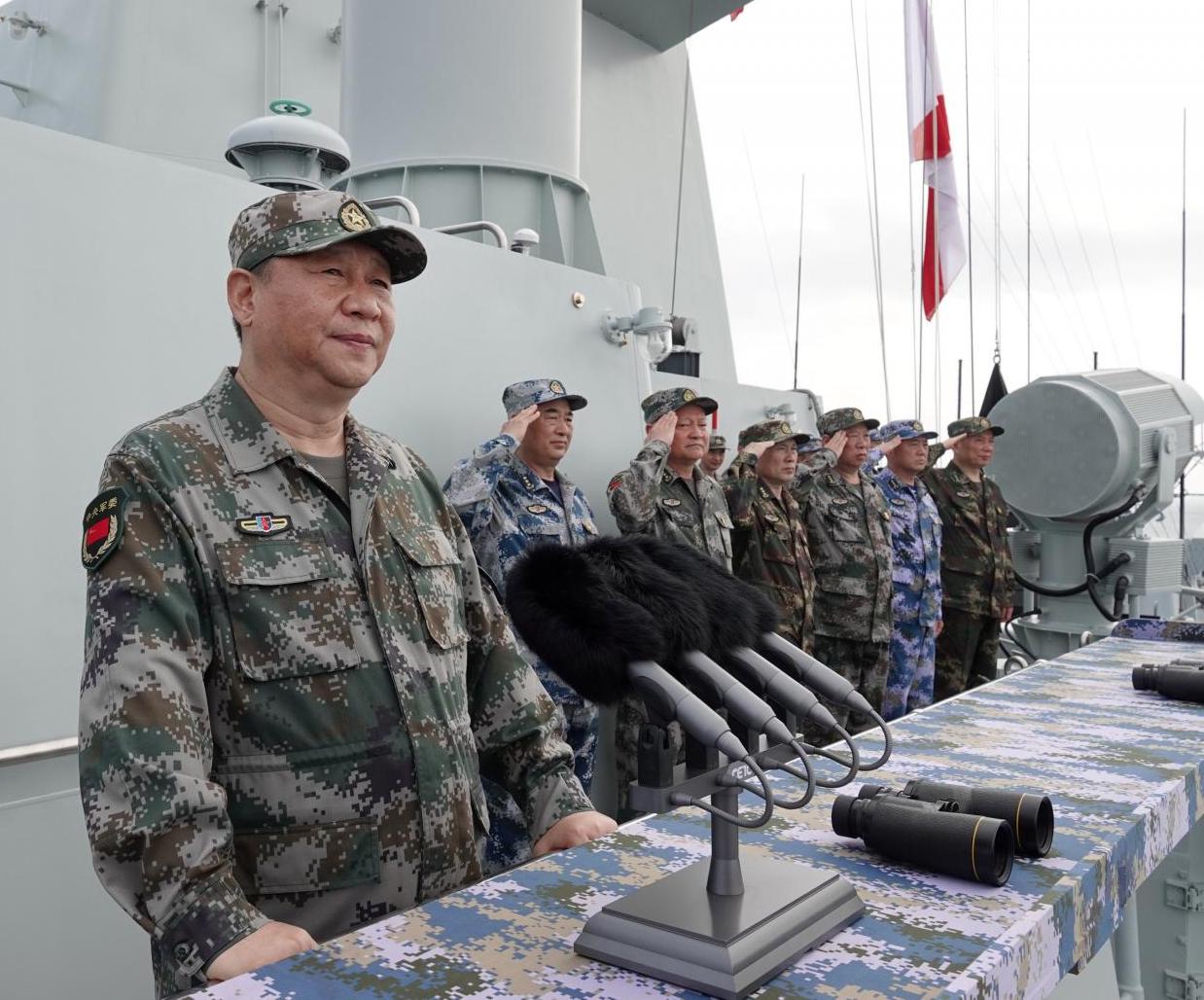
Chinese leader Xi Jinping aboard a PLA NAvy ship. Xinhua photo
Confrontational or irrational moves by Chinese warships and planes may not be actions of a “rogue commander” but rather decisions by a political commissar, a new report describes.
Cmdr. Jeff Benson, a senior military fellow at the Center for Strategic and International Studies and a former U.S. Naval Institute fellow, said Tuesday at a CSIS event that the role the political commissar plays aboard a People’s Liberation Army Navy warship is little understood but critically important in assessing Chinese short-term intentions and Beijing’s longer-range goals. The radically different command structure from the American hierarchy of a single skipper at the top also puts into play questions about “what is the party trying to achieve” by having a destroyer sail dangerously close to another vessel or an aircraft buzz a naval formation.
Zi Yang, co-author of “Party on the Bridge: Political Commissars in the Chinese Navy,” said President Xi Jin-ping “has tipped the balance a little more to the commissar” over the military commander in operations of a submarine, surface vessel or aircraft squadron to ensure adherence to party loyalty across the military.
One way of ensuring that shift is to ensure that political commissars are trained and skilled in the operations of the class of vessel or aircraft squadron they are assigned to. They “learn how to take command,” as one had to do during a confrontation with the Vietnamese after the ship’s commander fell ill.
What is often overlooked in examining Chinese military operations and its strategy is Xi’s emphasis on party-building during day-to-day operations.
“It’s time to understand” how decisions are made in the dual-command Chinese military structure. A commander and a commissar are aboard every vessel, Zi said. Benson added, “command and control are integrated as one; there is shared authority.”
Benson said the commander and the commissar have “distinct responsibilities” when it comes to serving aboard a warship. Among the commissar’s duties are personnel, including evaluating the commander, maintaining military and political discipline, checking on morale, conducting psychological operations and serving as a co-equal with the skipper.
Decisions are reached through an on-board party committee with at least two other members participating.
In short, the committee “decides to confront or not” or “whether to surface of not” for submarines underwater, Zi said, but “they first try to sort out matters in a personal manner.” Benson added, “it’s all about managing risk, and the commissar is in on that.”
This system can reduce unnecessary errors in operations, but it also is time-consuming in a rapidly developing emergency. Benson said “it’s up to the military commander to execute the military part of the operation.”
But in the end, even after handling an emergency, Zi said the commander’s decisions would be evaluated by the commissar.
Benson said the Kremlin had tried the dual command system but scrapped it. Before its collapse, “the commissar in the Soviet system was subordinate to the commander” when it came to operations.
Zi added there was a historical precedent for insisting on party loyalty in the Chinese navy. In the 1949 revolution that brought the Communist Party to power, most of the vessels in the fleet had been commanded and crewed by defectors from the Nationalist regime under Chiang Kai-shek.
Mao Tse-tung “wanted to ensure absolute loyalty to the party” from the start, he said.
The Communist Party under Xi doesn’t “want to fall into the same mistake as the Soviets” in downplaying loyalty in its military forces, Benson said.


No comments:
Post a Comment